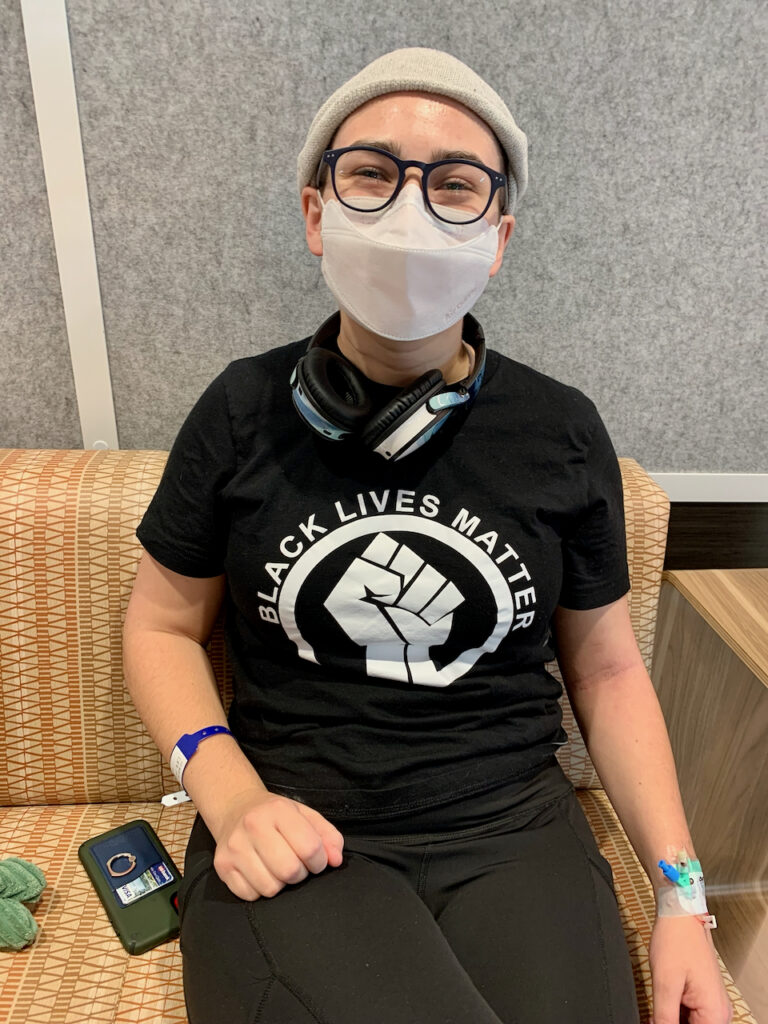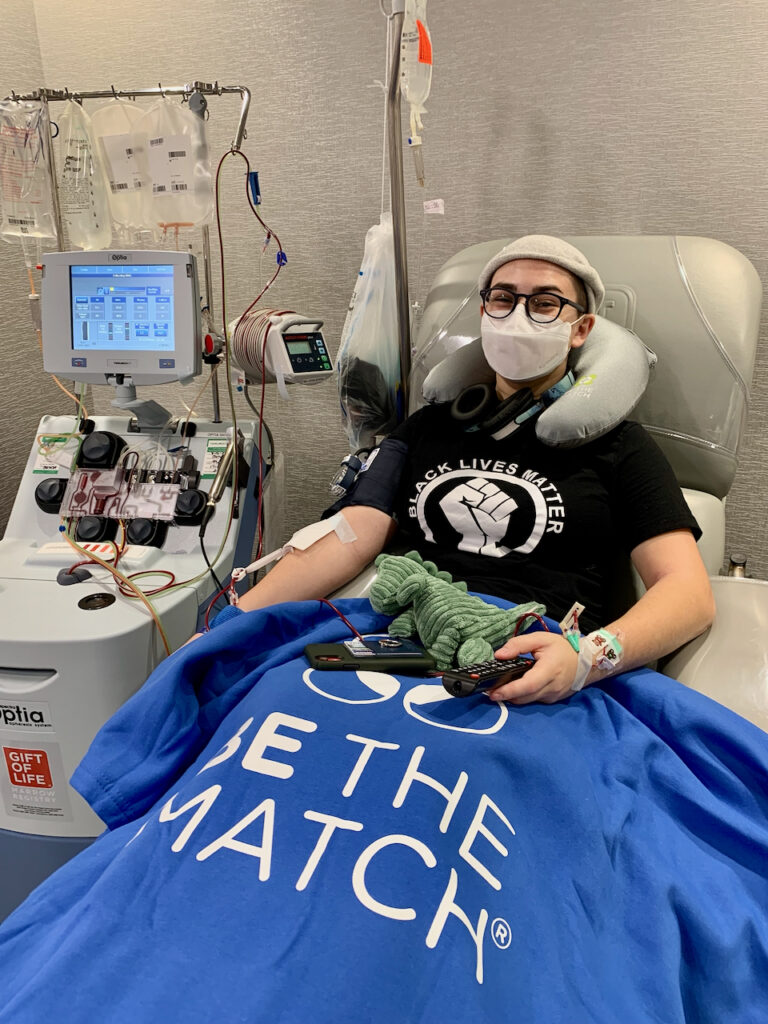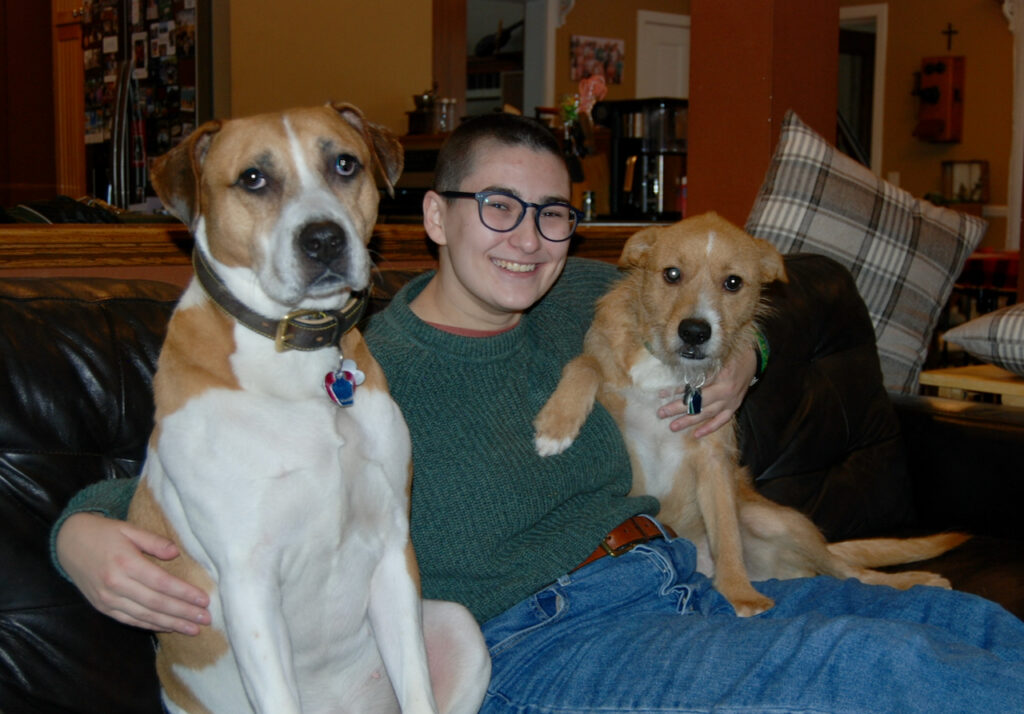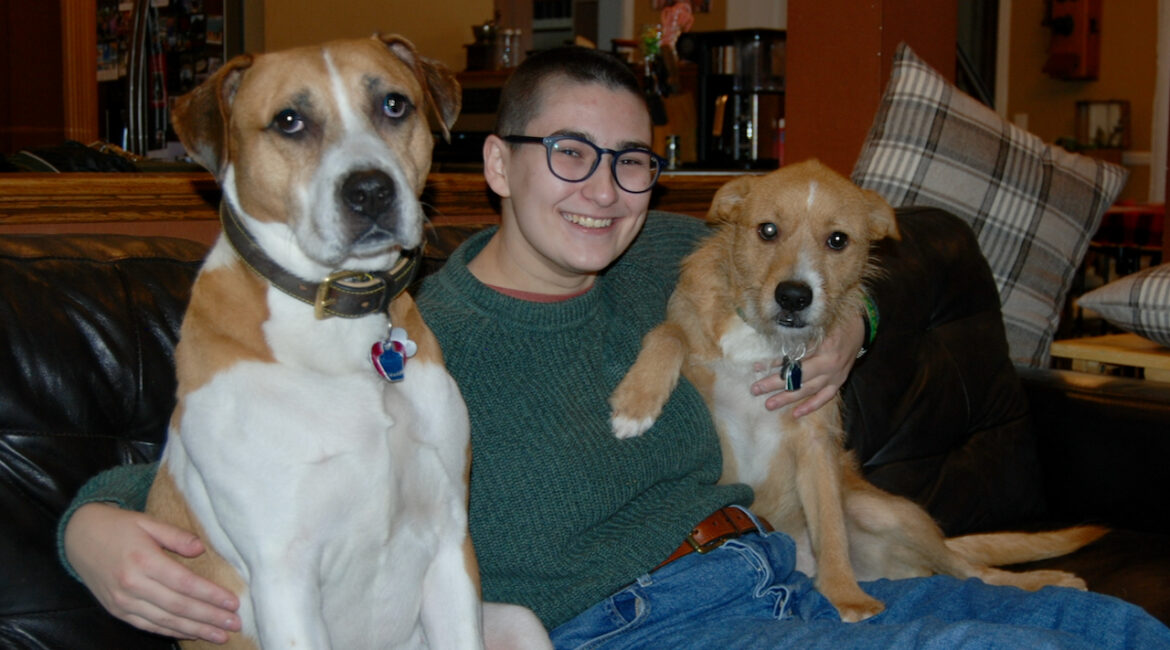By Kim McDarison
In 2020, while Wisconsin residents were participating in Gov. Tony Evers’ COVID-19-related emergency order No. 33, known as “Safer at Home,” Fort Atkinson resident Rachel Hamele was at school.
A then-freshman at the University of Wisconsin-Eau Claire, she said, it was a time in her life when she felt like she was “drifting.”
She saw an advertisement on Facebook; an organization was looking for stem cell donations. She responded and the group sent her a cheek swab kit. She followed the instructions and returned it.
Through that simple act, she said, she became involved with two organizations: “Be The Match,” a nonprofit group, that, according to its website, is operated by the Minneapolis-based National Marrow Donor Program and “connects patients with their donor match for a life-saving bone marrow transplant,” and “Gift of Life,” an organization, which, according to its website, is “singularly passionate about engaging the public to help us get everyone involved in curing blood cancer.”
While Hamele said she completed the swab kit in 2020, the donation was made in December of 2021.
What is stem cell donation?
According to Hamele, the process of stem cell donation involves collecting blood-forming cells from a donor’s bone marrow. The cells also circulate in a donor’s bloodstream. The cells can then be used to replace the blood-forming cells that aren’t fully doing their job in the recipient’s body.
When Hamele decided to undergo the process of becoming a match with a recipient, she said, she didn’t know anyone who needed a stem cell donation, and today, she still doesn’t.
“I am not supposed to publicly share the date or location of the donation or any identifying information of the recipient beyond that he is a little boy,” Hamele said.
Making a match
Hamele shared the science behind the matching process: “I was matched by our human leukocyte antigen (HLA) type, which is different from blood type. HLA is a protein/marker that tells our immune system which cells belong in our bodies. I didn’t necessarily match all of (her recipient’s) HLA markers, but I did for enough that it was worth having me donate after having me send in a blood sample to test.”
Hamele said she believed she and her recipient shared a similar “ethnic makeup,” which, she said, helped make the match.
“I am so incredibly lucky to have matched with him because those markers are so specific that I have a 1-in-3 chance of being the correct donor for my fully biological brother. It doesn’t depend on my blood type,” Hamele said, adding that she found it interesting that after a recipient receives a donation, the recipient will have the same blood type as the donor, and any potential children the recipient might have can potentially share the donor’s DNA.
What’s it like to make a donation?
Hamele said she underwent a process before making the donation.
“I had to get daily injections for a week of filgrastim/neupogen, which is traditionally given to chemotherapy patients, to increase my stem cell production so the procedure would go faster. This made my body work harder, as if I had a cold, and I had full body aches and headaches. Since it was targeting my bone marrow, I had lots of bone aches, particularly in my joints,” Hamele said. She likened the experience to having a “sneak peek at arthritis.”
To make the donation, she said, she was flown to “a lovely coastal state,” where a Gift of Life donation center received her. Up until then, she said, everything was organized by Be the Match.
The procedure itself involved being hooked up to a machine that filters blood, described by Hamele as similar to a plasma donation, but in this case, the process isolated and removed stem cells and returned the remaining components of her blood back to her body.
“This type of donation — Peripheral Blood Stem Cells (PBSC) — is 90% of donations, while extracting bone marrow only represents 10% of donations. My recipient only needed PBSC, which is good because Be The Match did not want to intubate me for bone marrow surgery as I have asthma. I’ve been intubated and put under anesthesia before, but Be The Match wants to be as careful as possible with everything,” Hamele said.
Describing the experience, she said: “I’ve never been pampered like that.” Further, she said, the group paid for all the expenses involved with making her donation, including flying her to the donation location.
While making her donation, Hamele said, she stayed at a resort and was driven in “luxury cars.”
“Even without being a college kid, it was a pretty awesome donation vacation for a week,” she added.
Side effects
While Hamele described some side effects from the procedure, when asked if she would do it again, she said: “Absolutely. I don’t know if there is a waiting period, but I may need to make another donation to the same child if the initial donation didn’t take. That will be at least six months down the line. Hopefully, I will never need to do it again, but I am here if I am needed.”
Side effects for Hamele included feeling “crummy” from the filgrastim shots, and she had a headache, caused by an imbalance of electrolytes, after the donation.
“I drank lots of Gatorade and took naps the day after and then I was as good as new,” she said.
Donations needed
Looking at the bigger picture, Hamele said stem cell donations are needed nationally.
“The vast majority of donors are white and there is a great need for ethnically diverse donors,” she said. She urged people of all types and ethnicities to swab their cheeks. She also suggested that people can organize donation drives through work or school.
She shared the Be The Match registration link as a way to get started (https://my.bethematch.org/s/join?language=en_US&joinCode=grant&utm_campaign=google_grant&utm_medium=cpc&utm_source=google&utm_content=sitelink_join_the_registry&gclid=Cj0KCQiAq7COBhC2ARIsANsPATElt9iQOhAt5ow06QP5EHBBfUomtAtSUdOT9LJZI-dGTw9ODOFFjYEaApTqEALw_wcB ).
Hamele cited a list of conditions that can be treated using stem cell donations. Among them: leukemias and lymphomas, bone marrow diseases and other conditions caused when bone marrow fails to work, inherited immune system disorders, hemoglobinopathies, inherited metabolic disorders, and others.
For those interested in learning more about stem cell donation, or becoming a donor, Hamele suggested they contact Be The Match through its website. The group also publishes a newsletter, she said. Once she was matched with a recipient, Hamele said she was connected with a coordinator who kept her informed and organized the logistics involved with making the donation.
A rewarding experience
As a stem cell donor, Hamele said, she found the experience both “weird” and rewarding.
Said Hamele: “ It feels weird because I had a whole week of vacation for two hours of work to save someone’s life. It feels very rewarding, though it really hasn’t sunk in. I don’t think it will set in until I hear from (the recipient’s) family, because I haven’t seen how this impacts him. I get a little bit of that feeling when I watch donors and recipients meeting in videos.”
While Hamele respects the need for keeping her recipient’s identity anonymous, she said there is a chance she can one day connect with him and his family.
In the meantime, the 2019 graduate of Fort Atkinson High School said she will continue with her education. She is a junior this year at UW-Eau Claire where she is majoring in secondary broadfield social studies education, with a concentration in history. She is also working on her Equity, Diversity and Inclusion certificate, she said.
Hamele plans to graduate in 2023.

Fort Atkinson resident Rachel Hamele waits at a Gift of Life donation center before beginning the procedure though which she will make a stem cell donation. The donation was made in December. Contributed photo.

Fort Atkinson resident Rachel Hamele makes a stem cell donation. The procedure lasted approximately 2-1/2 hours. Hamele holds “Gerard,” a stuffed toy she brought from home to help her overcome anxiety. Contributed photo.

Rachel Hamele enjoys time at home on New Year’s Eve. She is flanked by family pets “Layla,” at left, a 7-year-old American Stafford Terrier mix, and “Norbert,” a 4-year-old German Shepherd, Chihuahua and Schnauzer mix. Kim McDarison photo.
This post has already been read 3938 times!


